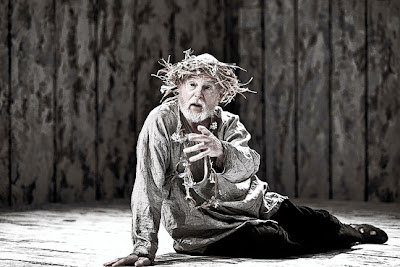My theatergoing buddy Bill and I were standing outside the Lucille Lortel Theatre when a black town car pulled up and out stepped Vanessa Redgrave, looking just as you always imagine Vanessa Redgrave looking—lovely in an understated but chic black suit, her hair done up in a casual chignon— both imperial and ethereal at the same time. She was there because her youngest daughter Joely Richardson is starring in Side Effects, the new Michael Weller play that opened last week in an MCC Theater production that drew decidedly mixed reviews.
I’m sorry to say that you’re going to have to count me on the naysayer’s side. As longtime theatergoers know, Weller is no novice. He made his theatrical bones back in 1971 with his first play Moonchildren, a critically acclaimed look at college seniors grappling with their feelings about the Vietnam War and other approaching horrors of adulthood.
Over the years, Weller, now 69, has continued to write about the dreams and disappointments of his generation in plays like Spoils of War and, most recently, Fifty Words, a two-hander about a severely dysfunctional couple on the eve of what could be the end of their marriage. There’s a pivotal phone call in Fifty Words and, it turns out, the person on the other end of the line is one of the characters in Side Effects.
That caller is Lindy, a Midwestern wife, who prefers memories of her laid-back hippie youth to the stringencies of her current life as the spouse of Hugh, the heir of a family business who now has political aspirations. Lindy also favors the mania of her bipolar disorder over the drug-numbing stasis of the prescribed medications she refuses to take.
The play opens in the couple’s living room after Lindy has acted out at a political dinner. The love-hate relationship between them then plays out in one histrionic scene after another, occasionally interrupted for an improbable plot twist. At one point, they get a phone call about something terrible that’s happened to their sons but instead of rushing out, as any parents would do, they stand around and squabble some more.
The entire play runs only about 90 minutes but it was everything I could do to keep from shouting out, “Just break up already so that we can go eat.”
I had my problems with Fifty Words too. Neither those characters nor the way they behaved seemed believable either (click here to read my review). But that show was almost salvaged by the go-for-broke performances of Norbert Leo Butz and Elizabeth Marvel, who so knocked themselves out that both actors got injured in their onstage brawling.
Both Richardson, who unlike her late sister Natasha has tended to do more TV and films than stage work (click here to read an interview with the actress), and her co-star Cotter Smith are good actors but they're much too well-behaved to make Lindy and Hugh seem like fully realized people.
In roles like the fathers in Kin and Next Fall, Smith has shown that he can be a master at portraying the put-upon white middle-class male, struggling to reconcile the man he is and the man he thinks he should be. But, at least in the performance Bill and I saw, Smith’s chin was drawn too tightly into his chest—there was no sign of why Lindy might have fallen in love with Hugh in the first place or why any political kingmaker would want to back him.
Richardson is as lovely to look at as her mother is but she’s also just as controlled as Smith, capturing too little of the recklessness that a woman like Lindy would display. And she relies far too much on what Bill calls “hair acting,”—running her fingers through her hair, flicking it off her neck, tying it up in a rubber band, shaking it loose.
The New York Post critic Elisabeth Vincentelli who saw the same performance that Bill and I did, mused in a later blog post that Richardson may have been intimidated by having her illustrious mom in the audience. But I think the actors and their director David Auburn just had a tough time making Weller’s melodrama more than an acting exercise.
But what do I know. Both Side Effects, which closes this weekend, and Fifty Words are part of a trilogy about divorce (click here to hear Weller talk about it) and, according to his Playbill bio, Weller has already sold it for a series on the cable network Showtime.









